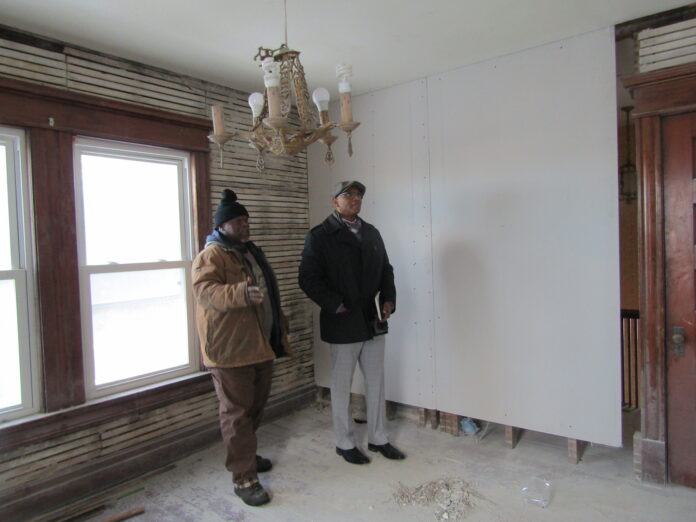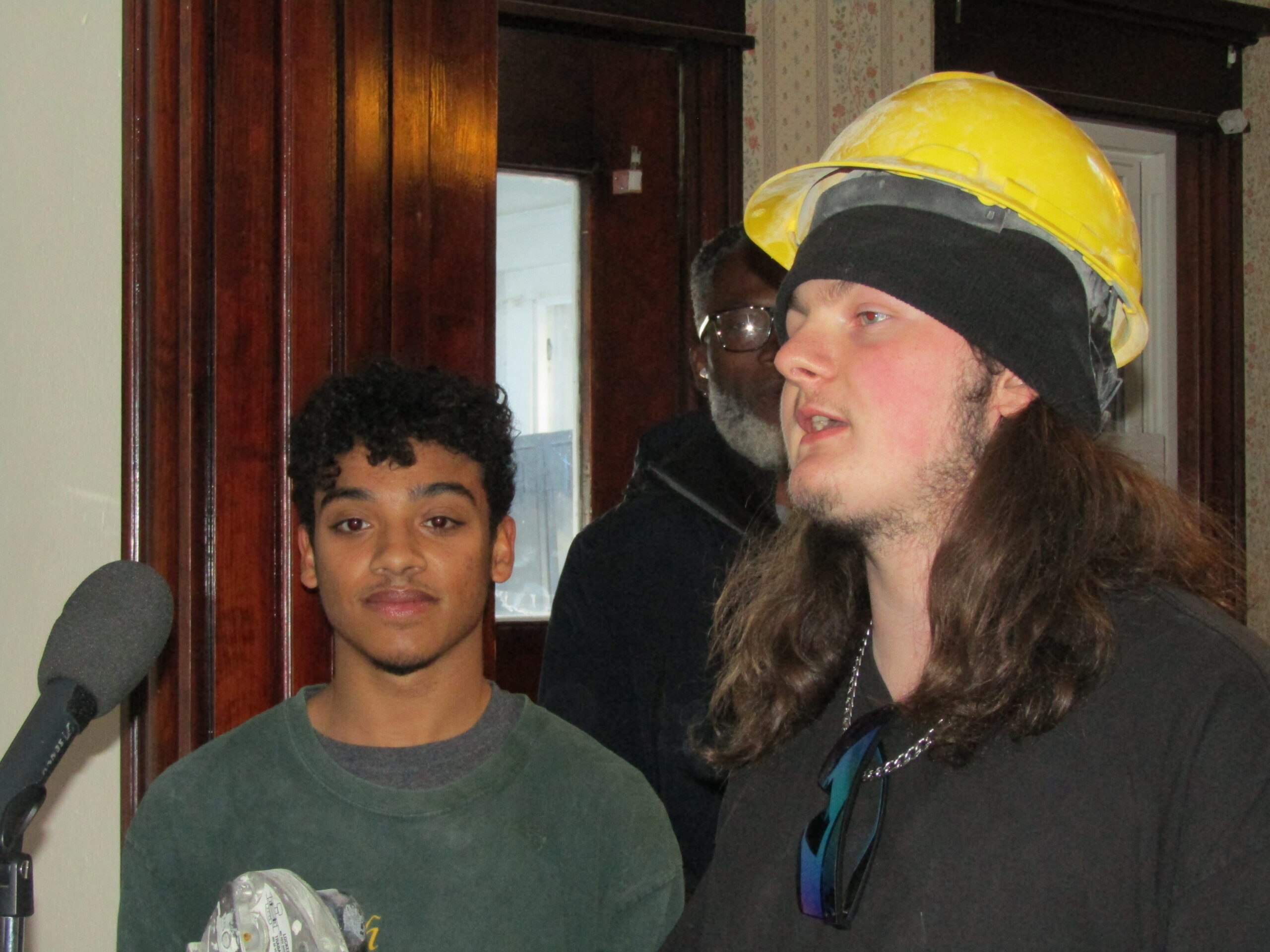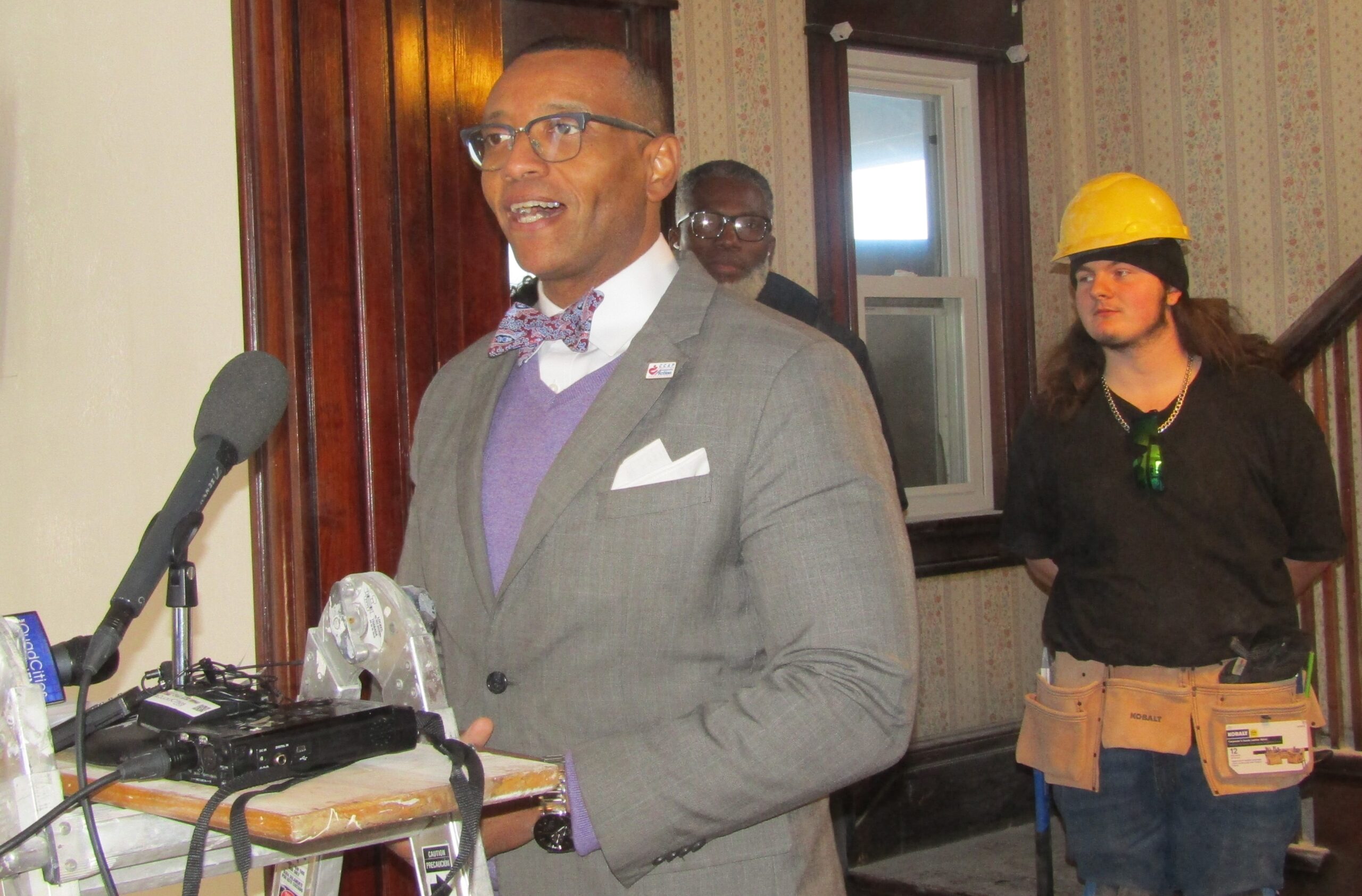
Chastin Barker loves the work he’s doing in an old Rock Island home that needs a lot of work. The 17-year-old Rock Island resident loves putting up drywall, and also the mudding work. That is the process of joining pieces of the drywall into a single, solid wall and is helping make the old home […]
Already a subscriber? Log in
Want to Read More?
Get immediate, unlimited access to all subscriber content and much more.
Learn more in our subscriber FAQ.
- Unparalleled business coverage of the Quad Cities
- Immediate access to subscriber-only content on our website.
- 52 issues per year delivered digitally, in print or both.
- Support locally owned and operated journalism.
Do you want to read and share this article without a paywall?
Click here to purchase a paywall bypass linkChastin Barker loves the work he’s doing in an old Rock Island home that needs a lot of work.
The 17-year-old Rock Island resident loves putting up drywall, and also the mudding work. That is the process of joining pieces of the drywall into a single, solid wall and is helping make the old home an updated house.
But what he really loves is to tell other young people about the value of the work, and the value of the program – called YouthBuild Quad Cities – that is teaching him some great skills.
“This is an eye-opening experience to see what this work and the world are all about. …. I want to encourage others to get involved,” Mr. Barker said on Monday afternoon, Nov. 27, at that Rock Island house.
Mr. Barker was one of about a dozen people to gather at the Rock Island home during a news conference that was held to highlight the work of the students and YouthBuild, and its partnership with Project NOW. (That group helps provide affordable and safe housing in the community, and tackles many other community needs and projects.)
Several leaders from Project NOW and YouthBuild who gathered Monday called the partnership a win-win situation because it is taking about 15 students and teaching them skills in the trades. At the same time, an old house is getting a new life. In this case, the house, which was built in 1926, had been used as a domestic abuse women’s shelter for decades. It stopped being used as a shelter about a year ago because it is in desperate need of renovations and repairs, according to Ron Lund, community services director for Project NOW. (The QCBJ has agreed not to list the house’s address because of its status as a women’s shelter.)
Mr. Lund said that there are many projects that need to be addressed in the home. But the tipping point came about a year ago when he looked at the handicap ramp that is attached to the house.
“That (ramp) was in such disrepair it was just a matter of time before somebody walked on it and fell through it,” he added.
If all goes according to plan, the house will be fixed up by next spring and again be used as a women’s shelter, housing six women, Mr. Lund said.
In addition to fixing that ramp, some of the other many projects in the house include plumbing, a few electric problems, drywalling, fixing the floors and other jobs. During a tour of the house on Monday, Al Carter, the construction site manager, proudly showed some of the flooring that had been repaired and a light stain put on the floors to make them look like new.
In addition to overseeing the many projects at the house, Mr. Carter is also helping teach the young people vital skills in the trades that could lead to high-paying careers.
“They’re learning. … Once they get rolling, this place is going to be nice,” he said. He added that he’s not sure when the renovation project will be complete because he wants to make sure the students learn how to properly do the many jobs involved in fixing up the house.
While the work on the house is important, several at Monday's news conference focused on the vitality of the other side of the partnership: teaching work skills and life lessons to young people.
Dwight Ford, Project NOW executive director, called the partnership a “perfect marriage” as both partners greatly benefit from the deal.
“Is it about drywall? Yes, but it’s also about life” and learning to work as a team and pay attention to details, he added.
“This is a construction project with a cause … with a purpose,” he said.
Rev. Ford and others at Monday’s news conference spent much of the time outlining the details and benefits of YouthBuilding. Some of those details include:
- Around 15 students from Thurgood Marshall Learning Center, Black Hawk College Adult Ed and Rock Island High School are taking part in the program. About 10 students are working in the Rock Island women’s shelter house.
- In addition to learning skills, the young people also earn money – $13 an hour. That hourly wage, plus bonuses for attendance, can come to about $415 every two weeks for the students, said Rufus Greer, executive director of YouthBuild Quad Cities. Students usually work one to three hours a day, and four to five days a week.
- Young people aged 16 to 24 who have not completed their high school diploma or GED are welcome to apply to the program. Young people may call (309) 788-0899 to find out more information.
- The young people in the program are traditionally known as “disenfranchised,” “marginalized,” “at risk,” and “disconnected”. They are too often defined by the struggles they face both socially and economically, according to information from YouthBuild Quad Cities.









